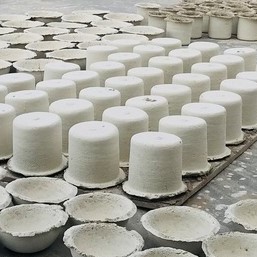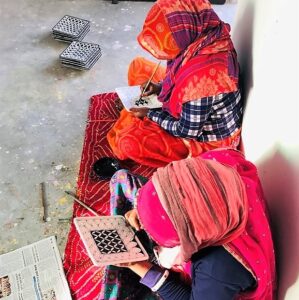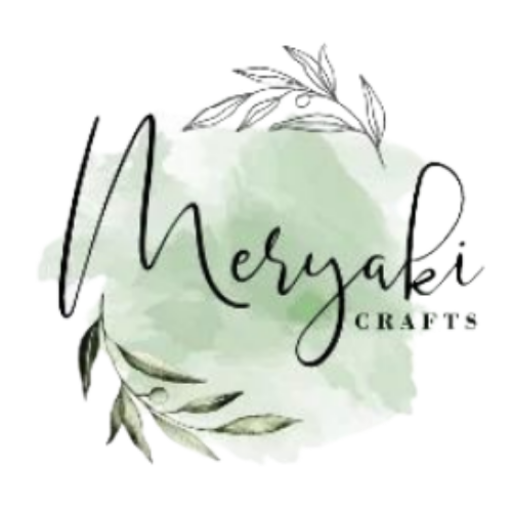THE BLUE HUES OF A PINK CITY – JAIPUR’S BLUE POTTERY
A mesmerizing art form, which originated from Mongolia, Blue Pottery from Jaipur has had an interesting and eventful journey. A GI tagged handicraft, it is perhaps the only form of pottery in the world, which is not made of clay or mud.
RICH STREAKS OF BLUE
When you set foot into the vibrant city of Jaipur in Rajasthan, be prepared to immerse yourself in its varied and beautiful history of arts, craft and architecture. Strolling down its bylanes and busy marketplaces, one cannot help but be filled with awe and wonder at the various sights and sounds of a city, bubbling with tradition and crafts.
Jaipur with its Mughal and Rajput influences, boasts of an array of arts and crafts that form an important facet of the city’s personality.
Lac bangles, Marble Inlay art and handicrafts, Miniature paintings, textiles, sculptures and more, adorn the city of Jaipur, creating a kaleidoscope of color and design that is unique to Rajasthan. Among its various art forms, Blue Pottery is not only popular in India, because of its vivid design and color, but has also gained worldwide fame and demand.
BLUE POTTERY – JOURNEY AND PROCESS

Pottery pieces drying out

Artisans sketching on the pottery items
The Blue Pottery art form has travelled from afar and its origins can be traced to the Mongol craftsmen, in the early 14th century, who combined the Chinese glazing techniques with Persia’s traditional craft. Used mainly to adorn and beautify important tombs, mosques, temples and palaces, this art form was a characteristic feature of the Turko-Persian architecture, found across the Central Asian regions.
The Mughal invasion of India, brought with it, among other rich influences on craft, culture and food, the vibrant and rich blue pottery craft, initially restricted only to architecture. It gradually evolved into pottery, through vibrant blue hues in the form of vases, crockery, and art tiles.
In the early 19th century, Maharaja Sawai Ram Singh II, was intrigued when two artisans hailing from Delhi, were able to take down the royal kites during the annual kite festival. On further enquiries, the Rajah was fascinated to learn that they had used the blue-green glass, used to coat the pots in the pottery making process, to cover the kite strings. This amazing craft style caught his fancy and the king convinced the artisans to settle and practice it in Jaipur. The rest as they say is history!
The process of making this iconic Blue Pottery first involves the creation of the dough. Made from an amalgamation of quartz powder, powdered glass, Fuller’s Earth or locally known as Multani Mitti, borax, gum and water, the dough is devoid of clay or mud that is common to other pottery formats. Left overnight, it is kneaded together over a period of 2-4 days, before the dough is used. Post this, the dough is pressed into a mould, and filled with ash to avoid unnecessary depressions. Removing extra dough, the mould is further given the desired shape. It is then removed from the mould and left to dry over 2 days. Once dried, the pieces are further smoothened in case of an uneven surface or holes.
The next step in the process involves the decoration and painting of the blue pottery products. It starts with sketching the art to be painted, on the product surface. Post sketching with a pencil, the design is outlined with cobalt oxide, and completed with filling it with other metal oxides. These different oxides such as chromium, cadmium, manganese and more, change into hues of deep blue, green, yellow, reddish brown and other vibrant shades once the pottery objects are baked. The finished product is then dipped into a glaze that combines different oxides, boric acid, powdered glass and the likes, and left to sun dry. It is then fired for almost 6 hours in a charcoal or wood kiln and finally left to cool for 3 days.
The motifs that adorn the pottery is akin to the Persian arts from where it evolved. Intricate floral designs, geometric patterns and animal motifs consisting of elephants, camels and peacocks, is what goes into the style and designs that one may commonly observe on Blue Pottery products.
THE EVOLVING FACE OF BLUE POTTERY
In beautiful colors of blue, white, green, yellow and red, Blue Pottery products are loved and cherished by all those who are smitten by the art form and style. However, it almost died down during the 1950’s, as master artisans were reluctant to pass on the craft secrets to the next generation.
Thanks to the undying efforts and endeavours of the famous and popular muralist Kripa Singh Shekhawat, Maharani Gayathri Devi and socialist Kamala Devi Chattopadhyay, the art was revived and promoted, which gradually gained popularity. In 2009, Blue Pottery got awarded the coveted GI status, to preserve this handicraft and prevent cheap imitations that would only be detrimental to the sustainability of the craft.
Local and international exhibitions and design interventions, help this community of artisans to understand and evolve this beautiful art form into present day products that have not only decorative, but also utility value. Pickle holders, spice drawers and boxes, jars, planters, crockery and decorative wall art are just some of the popular Blue Pottery products that are available today.
So the next time you travel to Jaipur, it would be worth every second of your while to get lost in the timeless beauty of Jaipur’s enchanting Blue Pottery handicrafts and bring some back to adorn your home!
